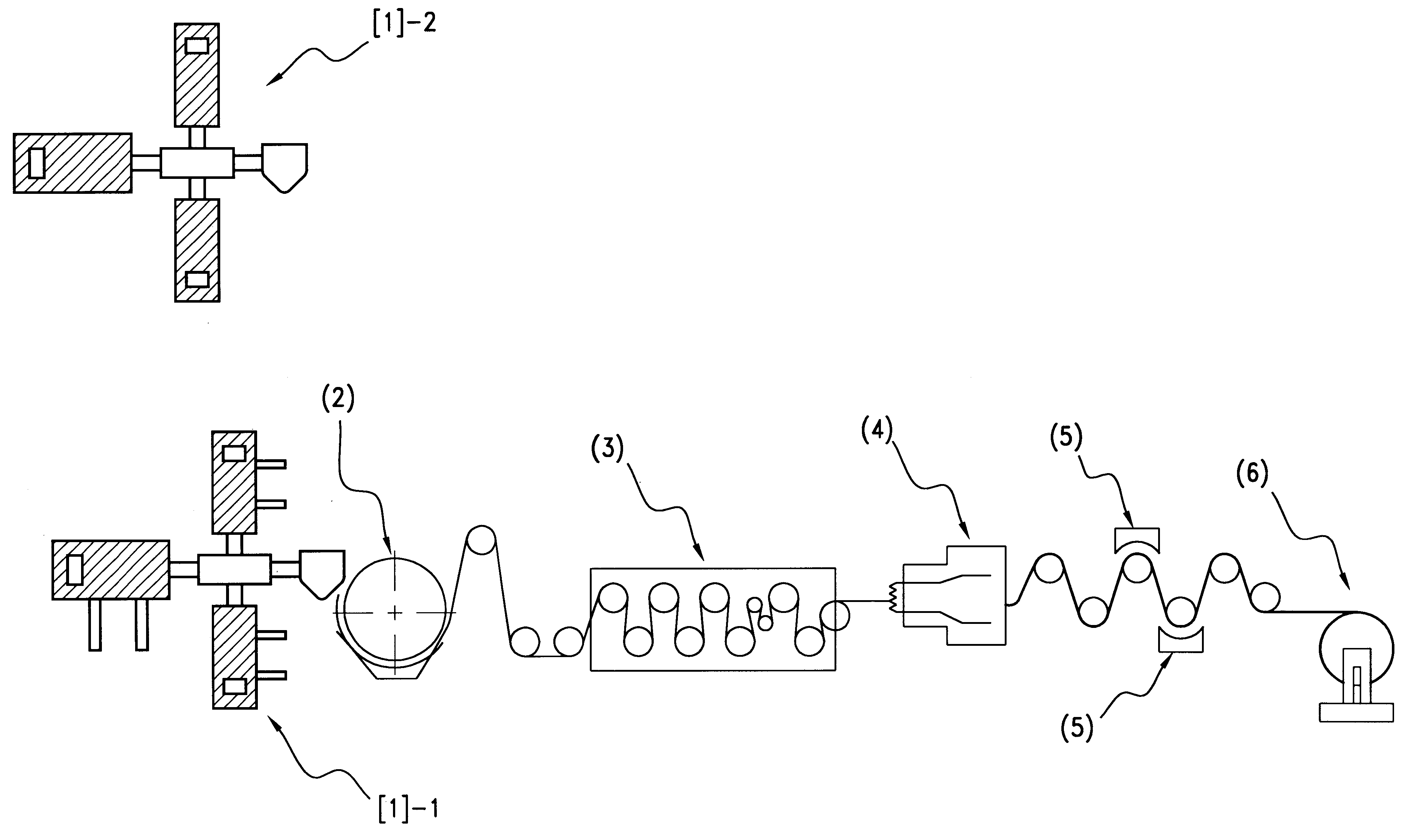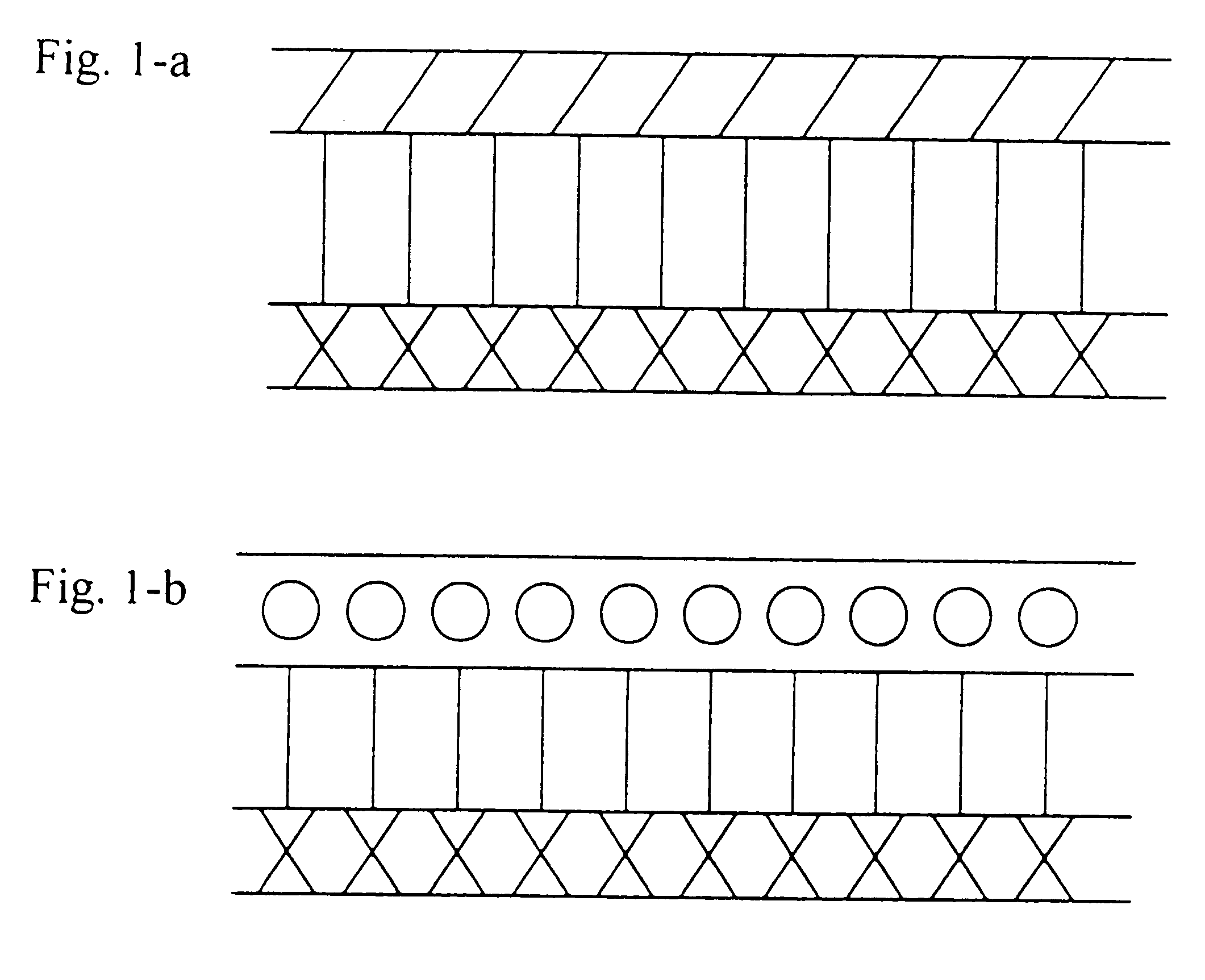Process for producing a 3-layer co-extruded biaxial-oriented polypropylene synthetic paper and transparent film for in-mold label
- Summary
- Abstract
- Description
- Claims
- Application Information
AI Technical Summary
Benefits of technology
Problems solved by technology
Method used
Image
Examples
embodiment example 2
of thickness 72, 92 .mu.m with white gloss paper layer (sample 3,4 attached)
PP resin (MFI=2.0) of 70% weight and antistatic agent of 5% weight is mixed and fed in the primary twin screw extruder from the feeding hopper, in the meanwhile, the calcium carbonate powder of 20% weight, and titanium oxide of 5% weight are fed into the two screw primary extruders from the other side feeding hopper (the above is the section of the foamed intermediate layer); On the other way, PP resin (MFI=2.0) 95% weight, antiblocking agent 3% weight, and ultraviolet absorbent 2% weight are mixed by a mixer and fed into the #1 twin screw secondary extruder of cylinder venting type from the side feeding hopper (the above is the section of the gloss paper layer); Then PP resin (MFI=2.0) 80% weight and PE resin (MFI=10) 20% weight are mixed by a mixer and fed into the #2 twin screw secondary extruder of cylinder venting type from the side feeding hopper (the above is the section of the adhesive layer). At the...
embodiment example 3
OPP synthetic transparent film of thickness 100 .mu.m (sample 5 attached)
PP resin (MFI=2.0) of 95% weight and antistatic agent of 5% weight is mixed an fed in the primary single screw extruder from the feeding hopper; On the otherway, PP resin (MFI=2.0) 97% weight and antiblocking agent 3% weight are mixed by a mixer and fed into the #1 single screw secondary extruder from the feeding hopper; Then PP resin (MFI=2.0) 80% weight and PE resin (MFI=1.0) 20% weight are mixed by a mixer and fed into the #2 single screw secondary extruder from the feeding hopper. At the extruder temperature of 200.about.280.degree. C., these mixtures are extruded through the same one T-die by means of 3-layer co-extrusion, and then pass the cooling rollers at the temperature 15.about.65.degree. C. Thus the PP coating sheet is cooled and shaped, then preheated at 120.about.150.degree. C. and fed into the longitudinal orientation device for drawing 5 times for longitudinal orientation, then tempered and cool...
PUM
| Property | Measurement | Unit |
|---|---|---|
| Fraction | aaaaa | aaaaa |
| Percent by mass | aaaaa | aaaaa |
| Percent by mass | aaaaa | aaaaa |
Abstract
Description
Claims
Application Information
 Login to View More
Login to View More - R&D
- Intellectual Property
- Life Sciences
- Materials
- Tech Scout
- Unparalleled Data Quality
- Higher Quality Content
- 60% Fewer Hallucinations
Browse by: Latest US Patents, China's latest patents, Technical Efficacy Thesaurus, Application Domain, Technology Topic, Popular Technical Reports.
© 2025 PatSnap. All rights reserved.Legal|Privacy policy|Modern Slavery Act Transparency Statement|Sitemap|About US| Contact US: help@patsnap.com



